
Review
Wreckreation is more of a sandbox than a racer
by Kim Muntinga

"Little Nightmares 3 is an atmospheric masterpiece: visually and acoustically brilliant, dramaturgically dense. In terms of gameplay, however, routine and moments of frustration creep in, occasionally slowing down the perfectly composed horror.
I wake up in the dark. Moisture drips from the ceiling and lands in a puddle next to me. The floor is cold, rough and smells of rust. I don't know where I am. Only that I have to get up.
A soft rustling sound. Movement. Two blue tails flash in the semi-darkness. Low, the boy with the raven mask. I breathe a sigh of relief, quietly, almost imperceptibly. We say nothing, but his gaze alone is enough. He pulls the bow from his back, checks the string. I reach for my spanner: heavy, familiar, almost too big for my hands.
We set off together. The fog swallows every sound except for the dripping and squeaking of our footsteps. Sometimes, very briefly, I hear something else: a muffled rumbling somewhere in the distance, as if something big is breathing. I don't want to know what it is.
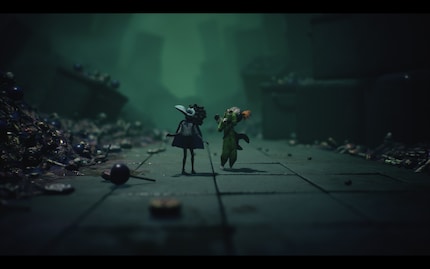
After just a few minutes, I realise what «Little Nightmares 3» does so masterfully: It makes me feel that every move means courage. That you can be small, scared, lost and still keep going.
While I'm creeping through Necropolis, I think back to the first time I played «Little Nightmares». That feeling of being trapped in a world that wants to devour you: not because you're evil, but because you're small. Back then, Tarsier Studios had created something that wasn't just horror. It was a reminder of childhood fears, wrapped in surreal architecture, cold light and grotesque characters. «Little Nightmares 2» took this further - bigger, bolder, darker.
But this time something is different. Behind «Little Nightmares 3» is no longer Tarsier, but Supermassive Games. The studio that has already shown with «Until Dawn» and «The Dark Pictures Anthology» that it understands fear, but in a different way. They stage horror like a play, with subtle lighting, clear pauses and emotional timing. And you can feel this change immediately. The world of «Little Nightmares» now feels a little more structured, more focussed in its staging. It feels like there are more checkpoints and the plot structure is completely linear.
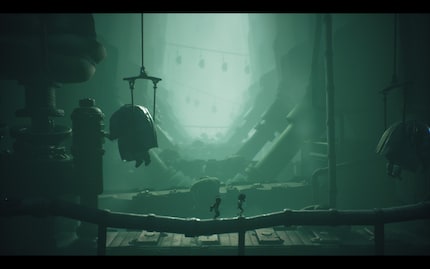
The biggest innovation is the duo system. Two characters - Alone and Low - share the horror. For the first time in the series, you don't have to face a nightmare alone, but experience it in pairs.
In single player mode, I choose who I play at the beginning: Alone, the girl with the red pigtails and green overalls, or Low, the boy with the blue cape and raven mask. The respective partner is then chosen by the AI. My choice falls on Alone.
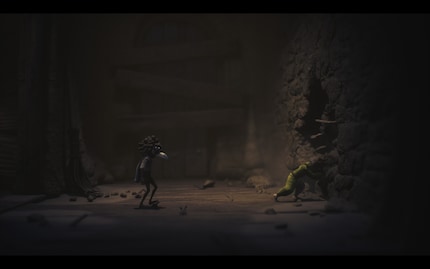
Those playing in pairs can experience the journey in co-op mode, side by side. Unfortunately, I have not yet been able to try out this mode. Disappointingly, this does not work via crossplay and only via the internet, i.e. not together on one device.
Alone carries a spanner, Low a bow. They complement each other: power and precision, proximity and distance. This duality changes the tone of the game. It's no longer just about fear, but also about trust. About the silent bond between two children who have to learn to rely on each other. Where silence used to mean loneliness, it now stands for closeness. And when Alone and Low crawl through the fog together, «Little Nightmares 3» feels like a single, silent vow: we'll only get out of here if we stick together.
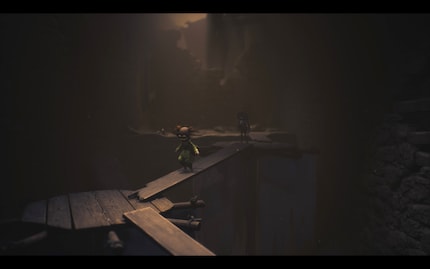
«Little Nightmares 3» is not a game that explains. It throws you in, lets you stumble, fail, learn. No flashing symbols, no superimposed commands, no voiceover telling you what to do. Everything results from movement, from intuition, from the interaction between me and Low. And that's the game's greatest strength. But also its greatest weakness.
As much as I love this wordless trust, it has often driven me to white heat. I stand in front of a mechanism, looking at ropes, gears, platforms and the game tells me nothing. It waits patiently, almost mockingly, as if it wants to test how long I can hold out. The puzzles are rarely complex, on the contrary: they are usually so simple that I never feel particularly clever when I solve them.
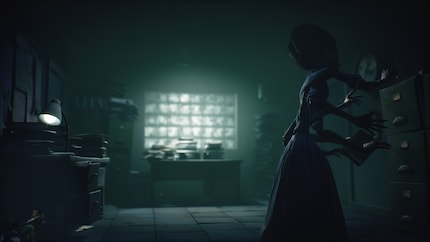
This became most obvious in a scene that almost got on my nerves: a floor panel that only activates when both characters jump on it at the same time. Sounds simple. But it wasn't. I didn't try it two or three times. More like ten. Maybe twenty. Again and again. You have to come up with the idea that you have to jump on the same disc several times before it finally works.
And here we come to the second major point of criticism: the game repeats ideas like this too often, varying familiar tasks only minimally. Push the object. Climb the ladder. Wait for the right timing. A pattern that eventually loses its tension. Where previous instalments played with surprises, «Little Nightmares 3» relies more heavily on routine. It feels less precise, less spontaneous. As if Supermassive Games had tried to maintain the form without quite hitting the beat.
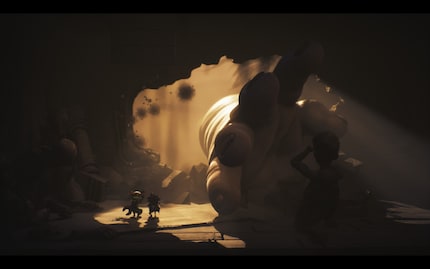
And yet I keep at it. Despite all the frustration, despite some tough passages. Because somewhere around the next corner, another moment is waiting to hit me: wordlessly, coldly, unexpectedly. Perhaps that is the true essence of this game: it forces me to trust, even if it has long since made me suspicious.
Maybe that's why I'm sticking with it. As if it's a world that keeps catching me, even when I'm fed up. «Little Nightmares 3» is not just set in one town, but in a whole web of nightmares called «The Spiral». It's a warped cosmos of places that feel like they're built out of fear.
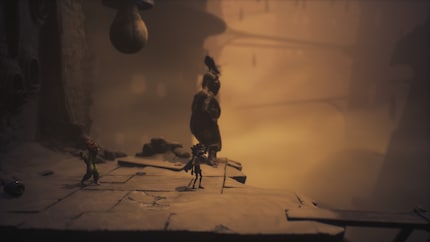
My path first leads through Necropolis, a city that lives and dies at the same time. An endless labyrinth of stone, sheet metal and vapour. Houses look like cages stacked on top of each other, bridges lead to nowhere, pipes breathe. Everything here is in motion, but none that takes you any further. Every corridor ends in a circle, every door only opens the next shadow. And yet this world has a strange beauty.
When I creep through the narrow alleyways, see the lanterns flickering in the fog and hear the muffled rumbling in the depths, I feel that feeling again that makes the series so unique: fear not as a shock, but as a state.
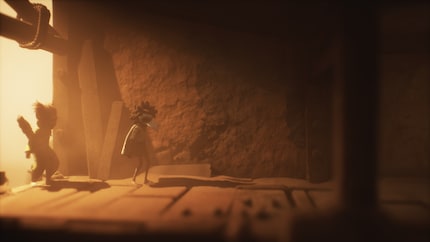
But «The Spiral» is bigger. Beyond Necropolis, new nightmares await: a candy factory where sticky machines hum and sugar vapours rise like fog; a grotesque fairground where masked figures dance in endless loops; and the Institute, a place of cold precision where even the silence seems mechanical.
What Supermassive Games has created here is simply visually outstanding. Every scene seems carefully composed, every detail tells a story. The game knows how to play off silence and sound against each other: the dripping of water, the creaking of old ladders, the distant rattling of a machine that never stands still. Everything seems precisely placed, never random. Even the silence sounds like part of the music here.
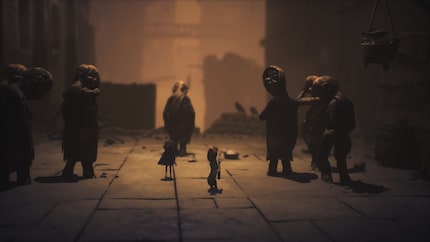
I quickly realise that the world of «Little Nightmares 3» is not just made up of shadows. It sounds like it too. Supermassive Games has created a first-class soundscape. In the tunnels, my footsteps echo like a warning signal, in the narrow shafts they sound muffled, as if the darkness is trying to swallow me up.
The sound is never an accessory. It guides me, warns me, deceives me. I hear things before I see them: a metallic clang in the distance, a scratch above me, deep, throaty breathing behind a wall. And each time, my gait slows as if the game has me on an invisible leash. «Little Nightmares 3» understands that the ear recognises fear earlier than the eye.
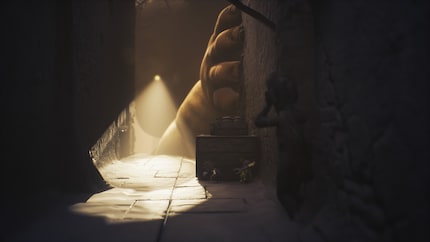
Music is not a constant companion here, but an intruder. It emerges quietly, almost imperceptibly, when something tips over, when silence has been too long, when security has become too familiar. An off-key chord, a breathy hum, a muffled bass beat. Sometimes the soundtrack seems to consist only of fragments, of things that have not been played to completion. But that's exactly what gives it power: it sounds like memory, not accompaniment.
What I like: The horror here doesn't come from volume, but from presence. A quiet drop can be more threatening than a scream, a breath closer than any monster. And sometimes, when I'm sneaking through a quiet corridor, I hear nothing - nothing at all - and that's the worst thing.
«Little Nightmares 3» was provided to me by Bandai Namco Entertainment for the PC. The game has been available since 10 October for Playstation 5, Playstation 4, Xbox Series X|S, Xbox One, PC, Nintendo Switch and Nintendo Switch 2.
"Little Nightmares 3" is a contradiction that works - at least sometimes. Supermassive Games continues the series in a brilliantly atmospheric way: the world of "The Spiral" is oppressive, beautiful, grotesque and alive at the same time. Hardly any other game knows how to tell a story of fear through sound, light and silence so well. Every sound is right, every image is a composition. It is a world that you don't just play, but breathe in.
But the gameplay (unfortunately) lags behind. The duality of Alone and Low sounds exciting, but quickly becomes a test of patience in solo mode. The game repeats its mechanics too often without creating any tension. This increases frustration. This is also due to the fact that the game provides hardly any explanations or hints and relies heavily on trial and error.
Nevertheless, the appeal remains. Because "Little Nightmares 3" is more emotion than system. It thrives on moments: a light source in the fog, a breath too close, a sound that haunts you when you have long since switched off. It is a game that does not want to be understood, but felt. And that makes it unique, despite its playful weaknesses.
Pro
Contra
My interests are varied, I just like to enjoy life. Always on the lookout for news about darts, gaming, films and series.
Which films, shows, books, games or board games are genuinely great? Recommendations from our personal experience.
Show all